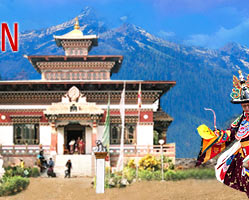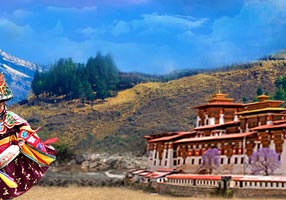Dzongkha is the official language of Bhutan and it is also the most common language spoken all over the country. The language is derived from the Tibetan language. Dzongkha has same alphabets and similar way of speaking as the Tibetan language but it uses a different script. Though Bhutan is a small country, its villages and valleys have remain separated and isolated with each other for centuries because of the torrential rivers, deep gorges and difficulty in commuting between the places. Thus, most of the Bhutanese valleys have developed their own dialects and as many as 13 dialects are spoken all over Bhutan. Dzongkha is more popular in the west while Sharchopka is spoken in the east. Nepalese immigrants settled in down south, continue to speak Nepali language. Bhutan Broadcasting Service in Thimphu broadcast news in all these three languages on short wave and FM.
The medium of instruction in schools in Bhutan is English, so most of the educated population can also speak English. Especially most of the urban Bhutanese population can communicate well in English. In rural areas though, it may become difficult to find many people who speak English. Due to the strong trade relations and close link with Indians for long, some Bhutanese can speak Hindi very well and Bollywood or Indian films are quite popular in Bhutan. All government documents and road signs are written in both English and Dzongkha, and the national newspaper of Bhutan, ‘Kuensel’, is published in three Dzongkha, English and Nepali. Since Dzongkha does not use Roman characters, the pronunciation of many sounds in Dzongkha is difficult to produce in English.




